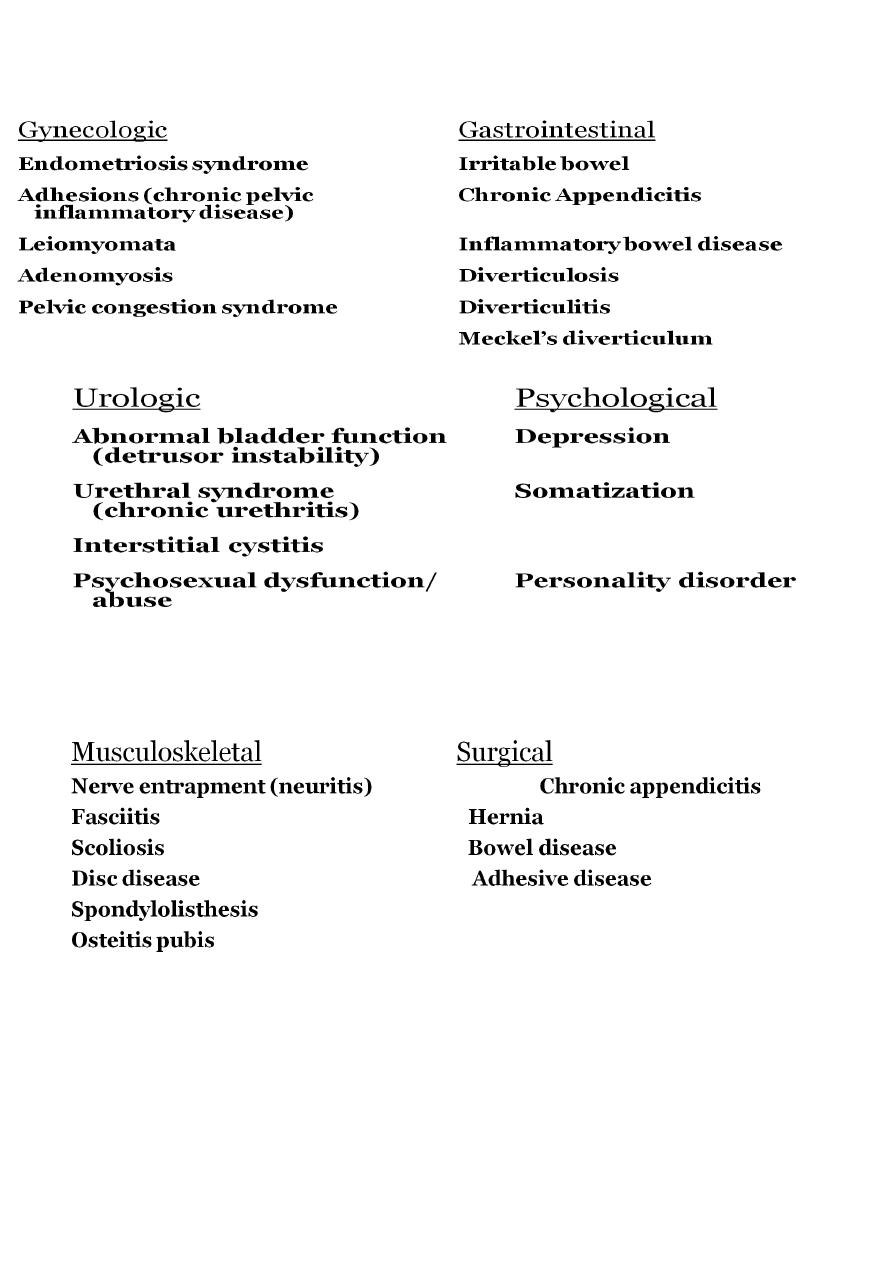
Chronic pelvic pain –Dr.Ahmed Jassim
deifnition
• Chronic pelvic pain refers to pain in the region between the hips, below the
bellybutton. In order to be considered chronic, the pain must last for at least six
months or longer.
• Chronic pelvic pain syndrome: chronic pelvic pain causing emotional and behavioral
changes.
Types of pain:-
1. Visceral pain
2. Referred Pain
3. Somatic Pain
4. Myalgia
5. Hyperalgesia
6. Neuroinflammation
Sources of chronic pelvic pain :-
1. Gynecological
2. Urological
3. Gastrointestinal
4. Musculoskeletal
5. Neuropathic
6. Others
Incidence:-
14 – 24% of women b/w 18 and 50 years.
1/3 do not consult doctor.
60% who consult are not referred to tertiary centre.
Population studies: GI (37%), Urinary (31%), Gynae (20%).
Laparoscopic findings: No pathology (35%), Endometriosis (33%), Adhesions (24%).

Differential Diagnosis for Chronic Pelvic Pain:-
Signs and Symptoms:-
1. Pain during intercourse
2. Cramping or sharp pains
3. Heaviness or a feeling of pressure inside the pelvis

4. Extreme and constant pain
5. Intermittent pain
6. A dull ache
7. Pain during bowel movements .
General Examination:- Gait- Musculoskeletal
Check Abdominal Wall – Point trigger, Ovarian point tenderness
Inspection of Vulva & introitus- Vestibulitis
Check for Pelvic Floor Myalgia
Single Digit Pelvic Exam
Bimanual exam
Rectovaginal exam
Investigations:-
o WCC, ESR
o CA – 125
o HVS / Endocervical swabs
o USS
o Laparoscopy.
Treatment
:-
Possible treatments for chronic pelvic pain include:
Birth control pills to stop menstruation
Progestogen (medroxy progesterone acetate (MPA)) was effective after 4 months’
treatment
Over the counter pain relief medications, such as ibuprofen or aspirin
Relaxation exercises, massage or physical therapy
Antibiotics
Psychological counselling
Surgery to correct pelvic abnormalities
Antibiotics if infection is the source of the pain
Antidepressants
Trigger point injections
Surgical management:-
Adhesion release.
beware of prolapse and bladder.
Presacral neurectomy: beware of vessel injury, bladder/bowel.
Hysterectomy with BSO
Surgical mx of non gynae causes.
